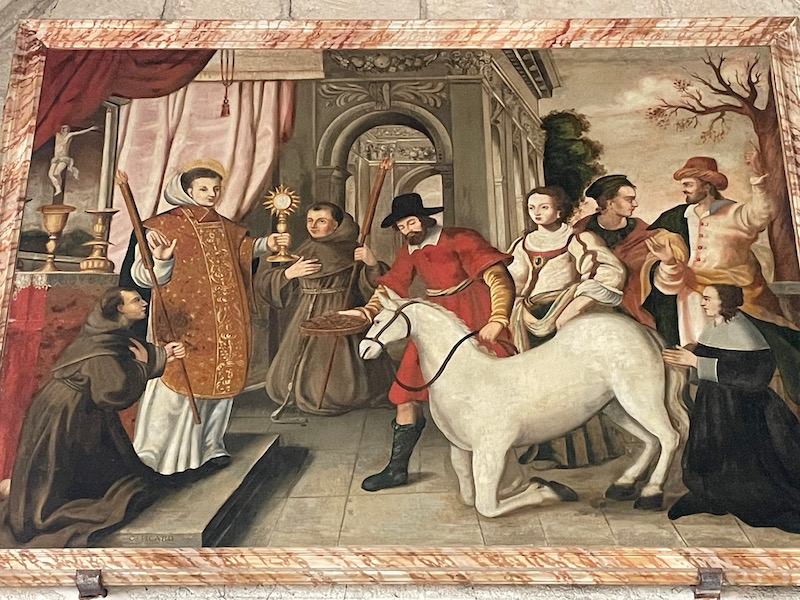Our Blog - Normandy 2023 - Bourges, France
The name "Bourges" comes from words for hill or village (Burg in German, Bourg in French) although it dates back to at least the 4th century BC, when it was called Avaricum. Avaricum was a typical Roman city, with a monumental gate, aqueducts, thermal baths, and an amphitheater. The massive walls surrounding the late-Roman town, enclosing 40 hectares, were built in part with stone re-used from earlier public buildings. Under Christianity, it was the seat of an arch-bishopric with Saint Ursin being the first bishop of Bourges.
During the 8th century, Bourges was on the northern fringes of the Duchy of Aquitaine and was, therefore, the first town to come under Frankish attacks when the Franks crossed the Loire River. The Franks captured the town in 731, but it was immediately retaken by Duke Odo the Great of Aquitaine. That lasted for another 30 years until it was taken again by the Franks under King Pepin the Short in 762.
The historic center still has a set of medieval streets that has been preserved with more than 400 half-timbered houses dating from the end of the 15th century.
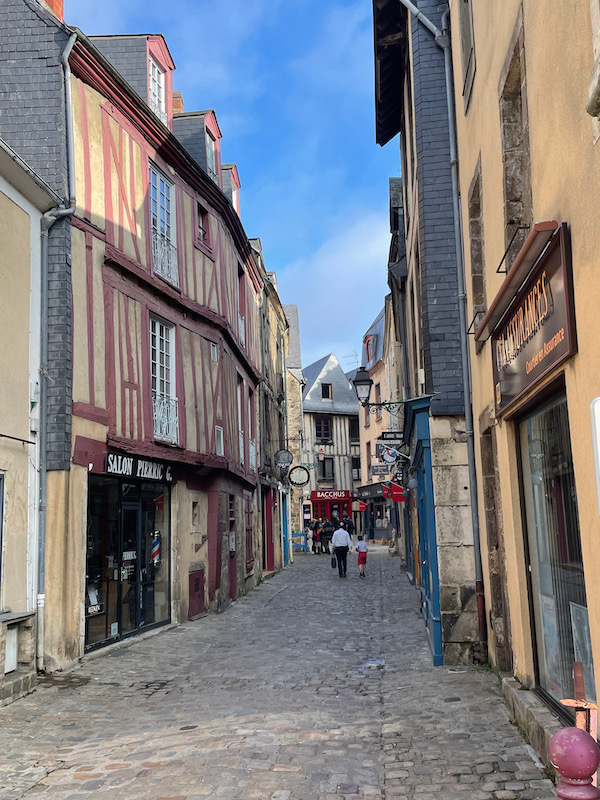
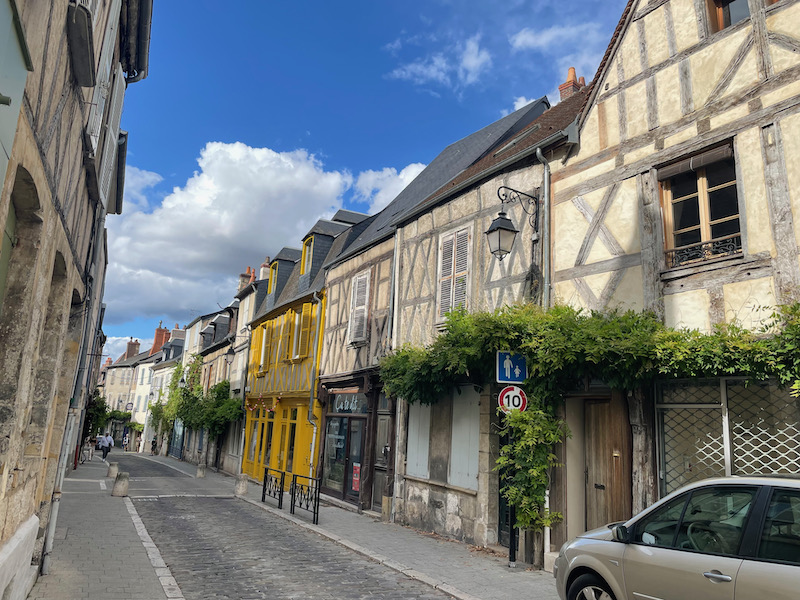
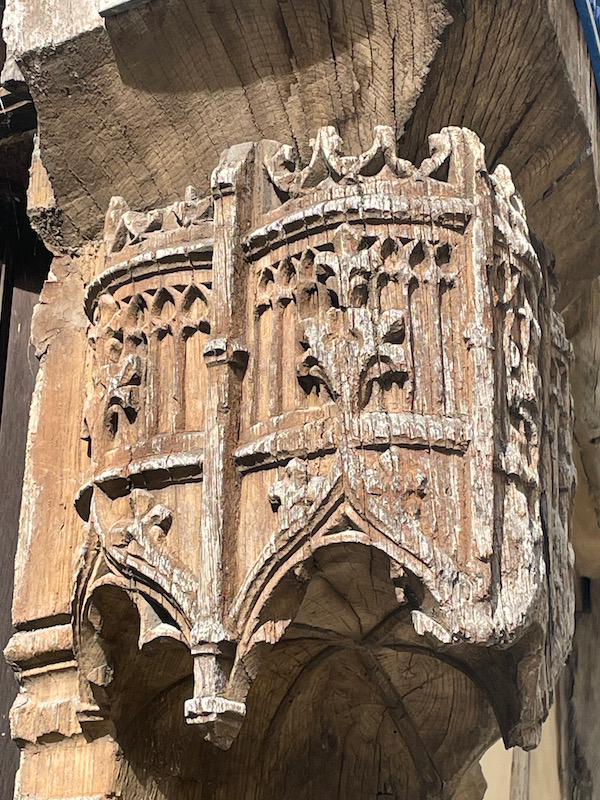
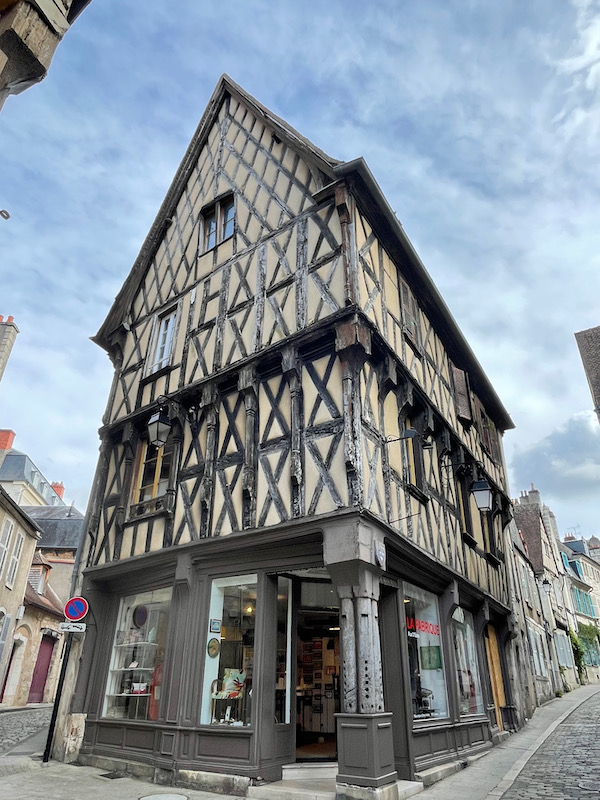
The Hôtel Lallemant was a private mansion, built in the late 15th and early 16th centuries by a rich merchant family from Germany. It is decorated mainly in early French Renaissance style. We were only able to peek at one small portion that is on rue Bourbonnoux because the building and its museums are closed for 2 years for restoration work.
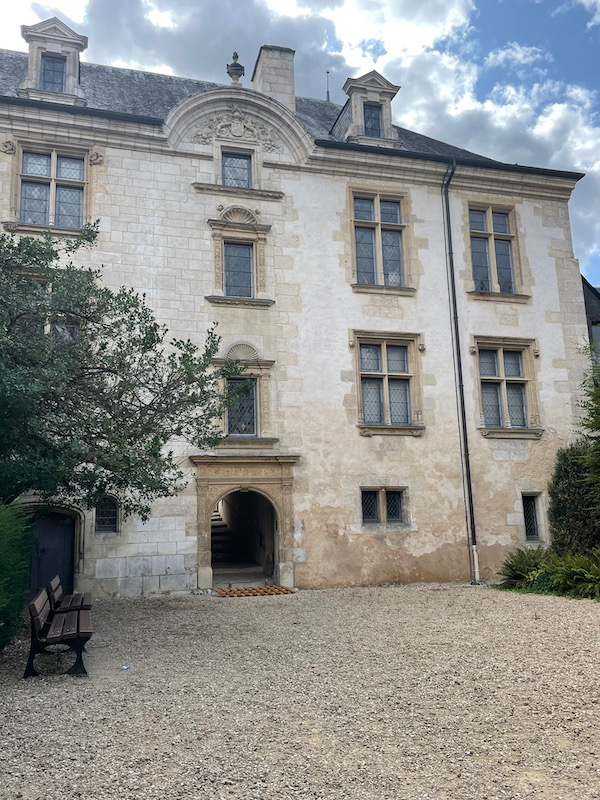
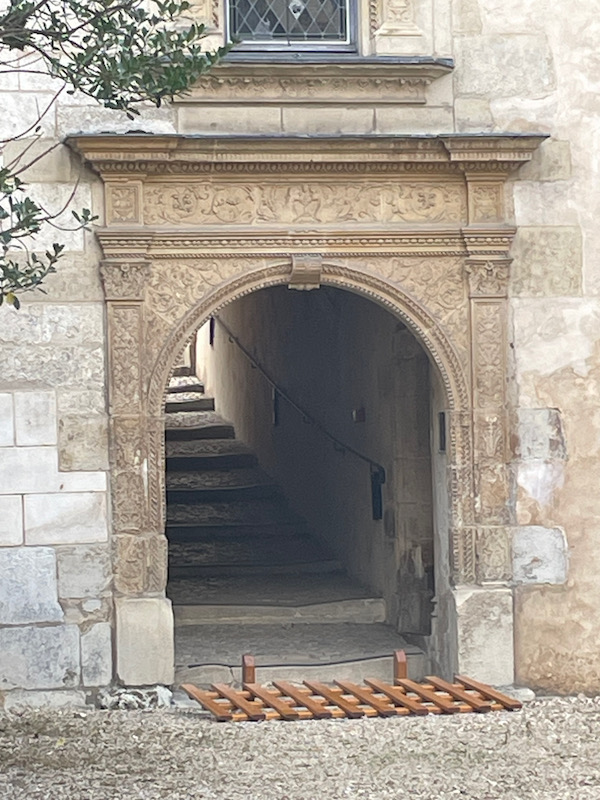
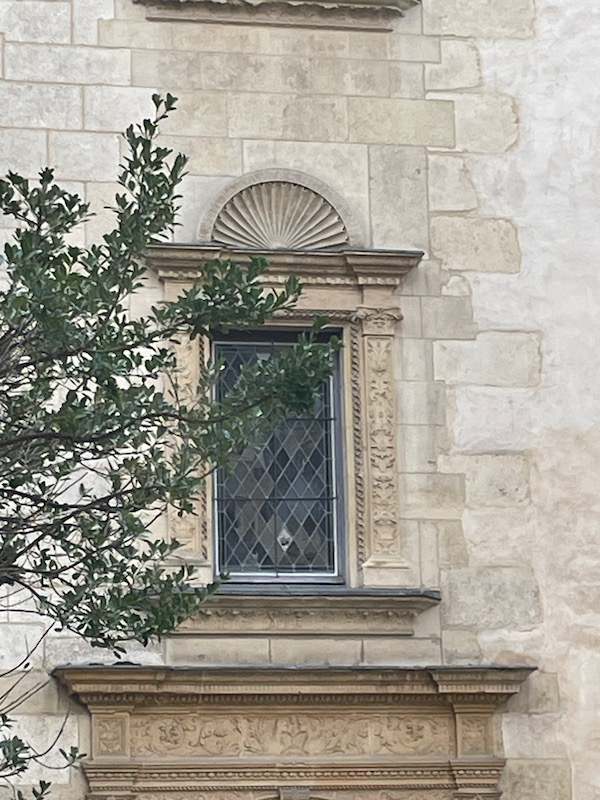
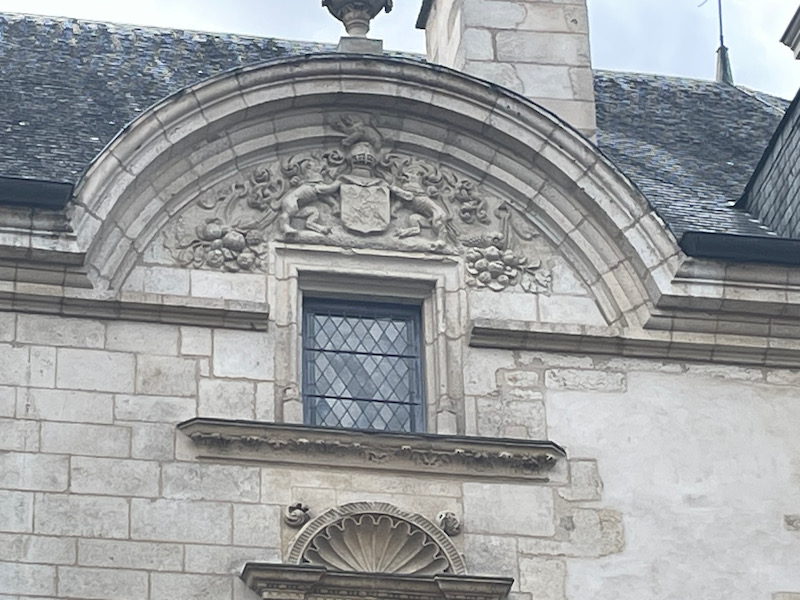
Place Gordaine is one of the most beautiful squares in Bourges, surrounded by half-timbered houses and restaurants.
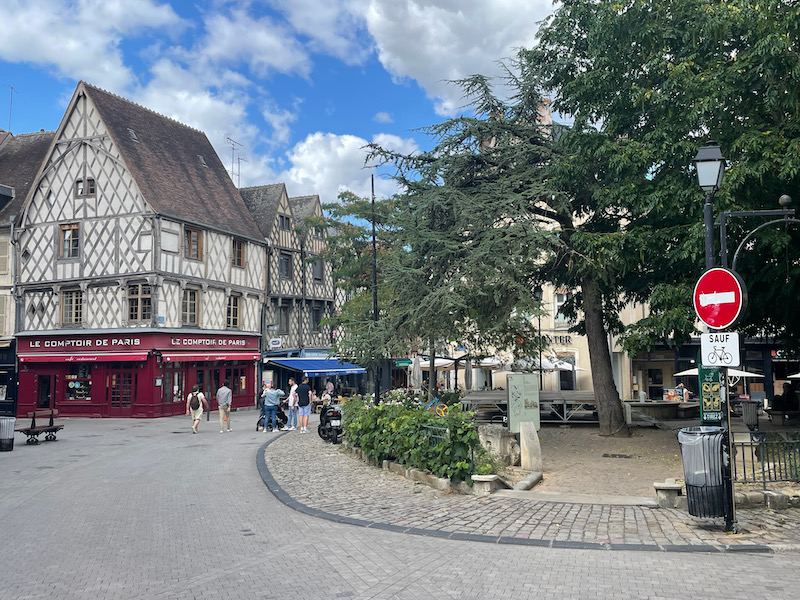
The former medieval town hall, the Hôtel des Echevins dates from the end of the 15th century. Here you can see the most noticeable feature, the staircase tower, but the more interesting thing (for me) is the figures sculpted into false windows (like in the 2nd picture and the last picture). It houses the Estève museum, which was also closed.
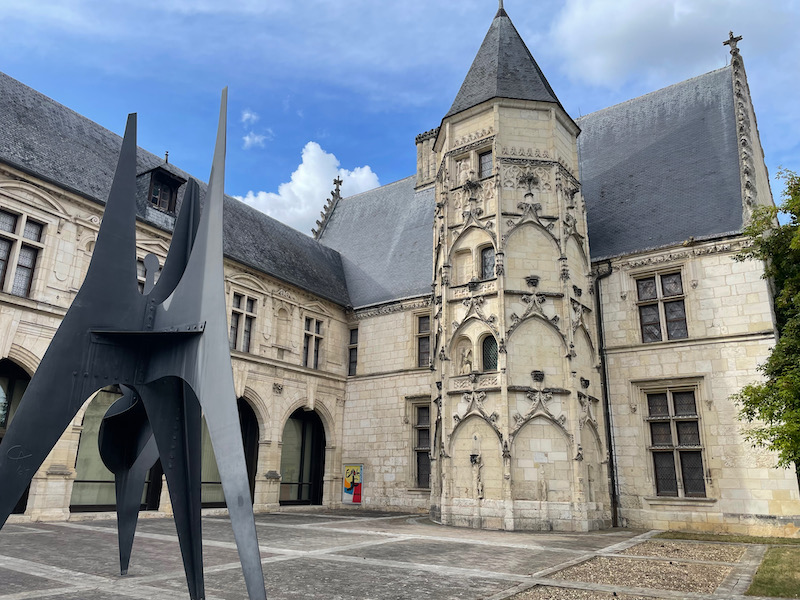

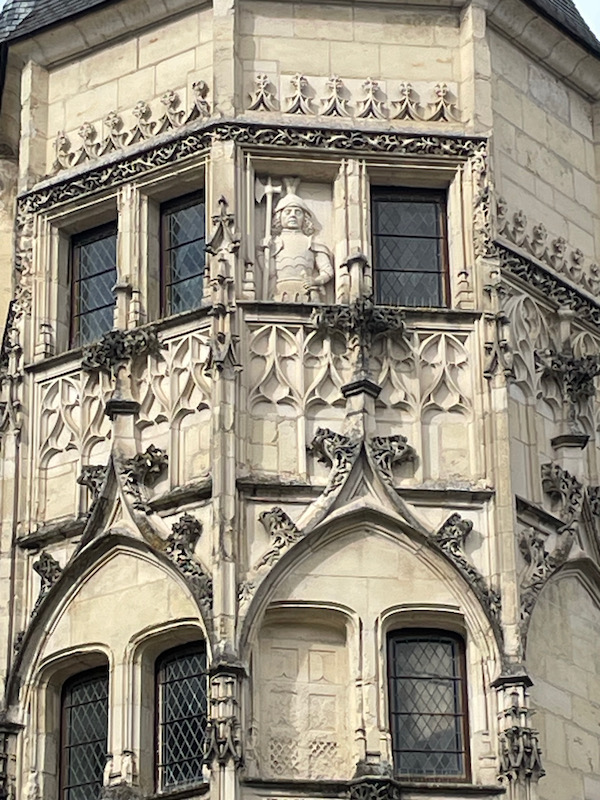
One of the emblematic buildings in downtown is the former "Aux Dames de France" department store. The Aux Dames de France chain was created in 1898 and they were known for their tailor-made buildings with nice ornamentation. This store was originally opened in 1906 but then closed in 1982, with the company itself going away in 1998. They have been trying to sell the building in Bourges with the idea of transforming it into 1 or more retail spaces on the ground floor and then apartments on the other floors.
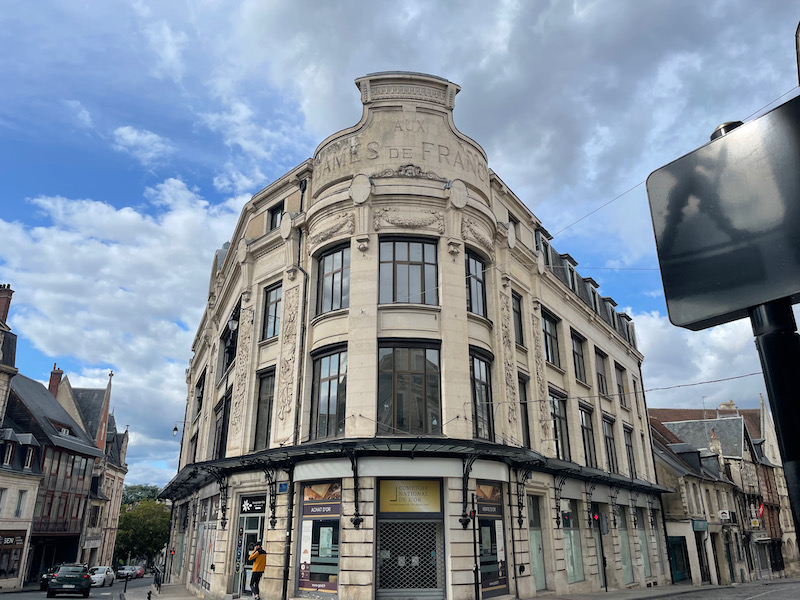
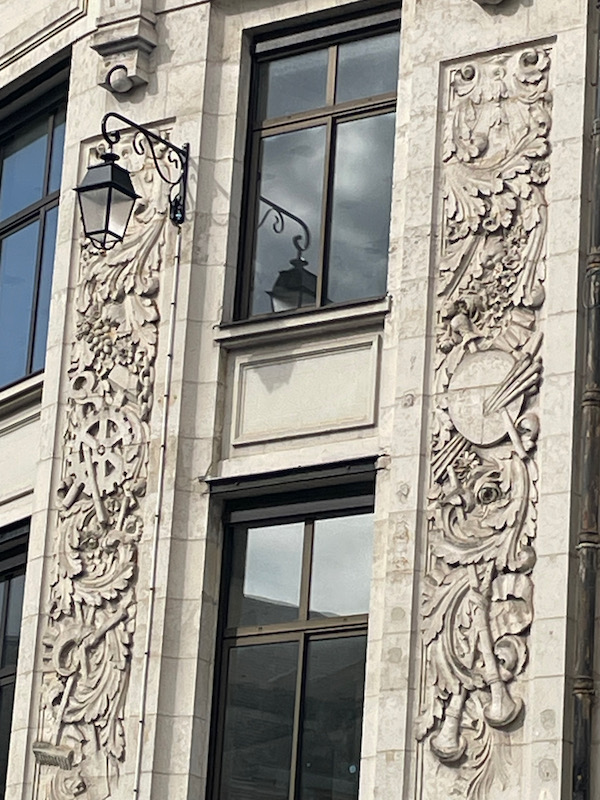
Cathedral Saint-Etienne is considered one of the earliest examples of the High Gothic style of the 13th century. Construction started as early as 1195, and by 1214 almost half of the building, the current choir, was completed. It is a form of basilica with chapels surrounding the nave, but there is no transept. As you can see, there is work going on, so one of the towers is covered with scaffolding. The last picture shows the tympanum over the side entrance, which shows Christ seated, surrounded by the emblems of the 4 Evangalists (John, Luke, Mark, and Matthew).
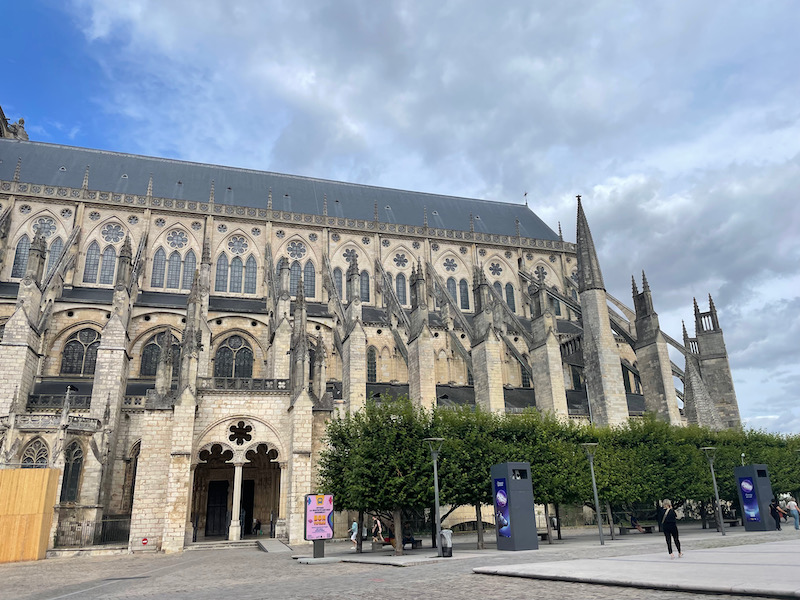
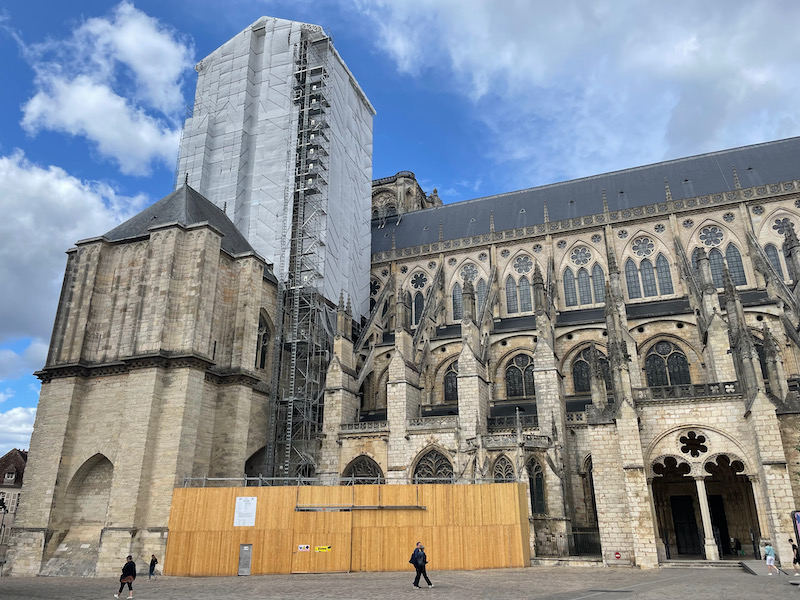
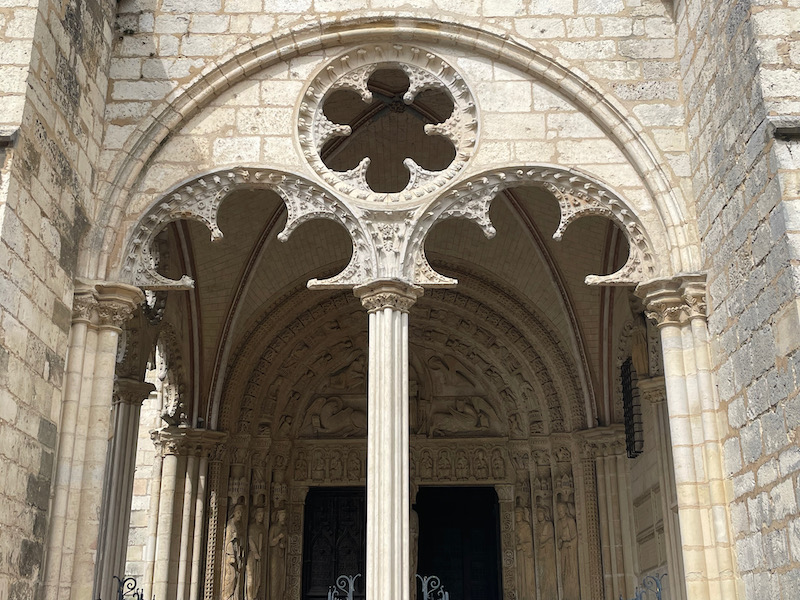
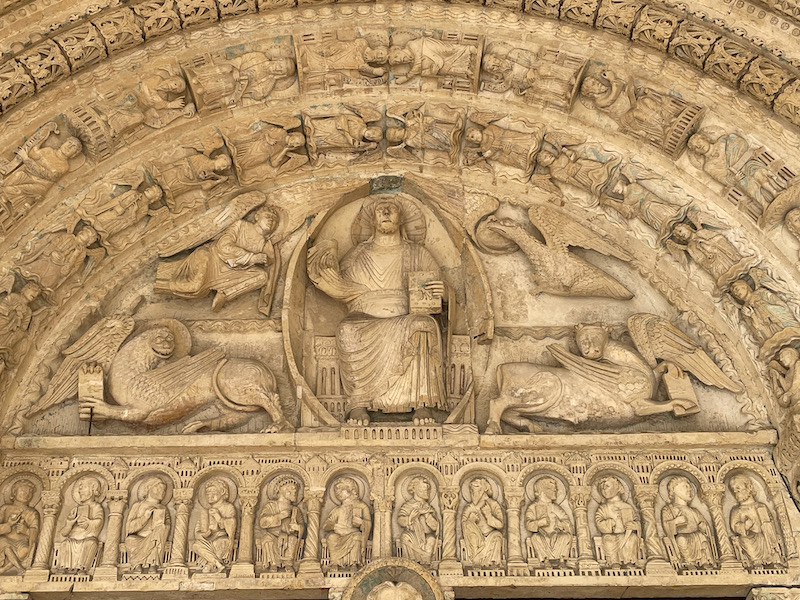 The north tower collapsed in 1506 and was rebuilt 1508-1542 but has a different height than the other tower.
There are 5 portals, the central portal offers a scene of the Last Judgment.
The north tower collapsed in 1506 and was rebuilt 1508-1542 but has a different height than the other tower.
There are 5 portals, the central portal offers a scene of the Last Judgment.
Its stained-glass, some dating from the 12th & 13th century. The side chapel windows are from 15th and 16th centuries.
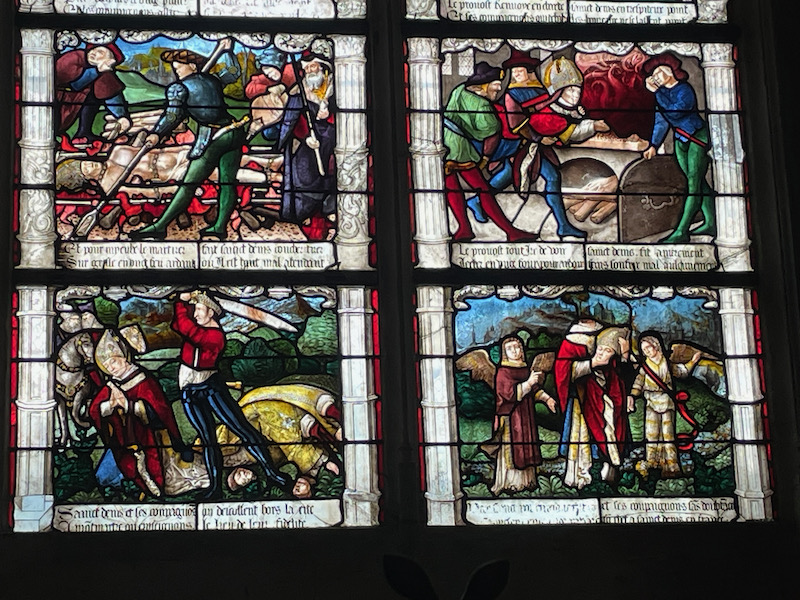
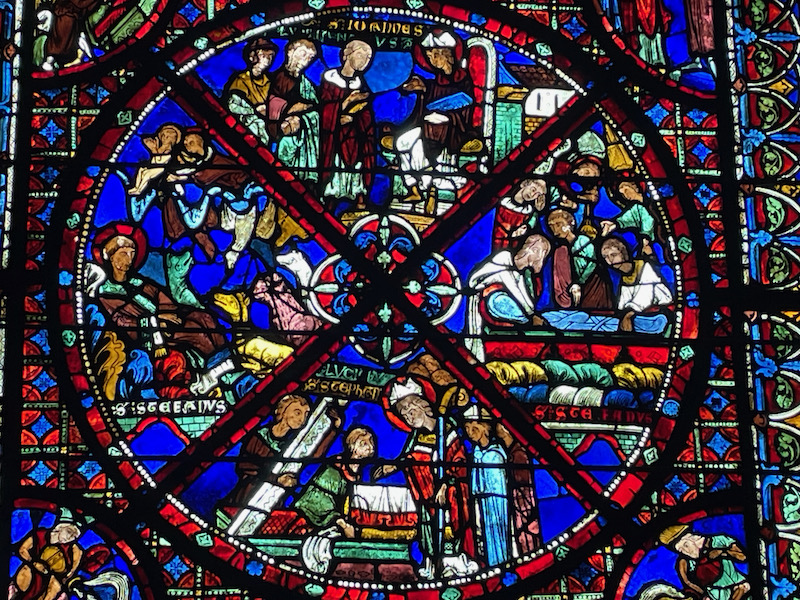
You can see the very tall ceiling here, typical of Gothic churches with flying buttresses.

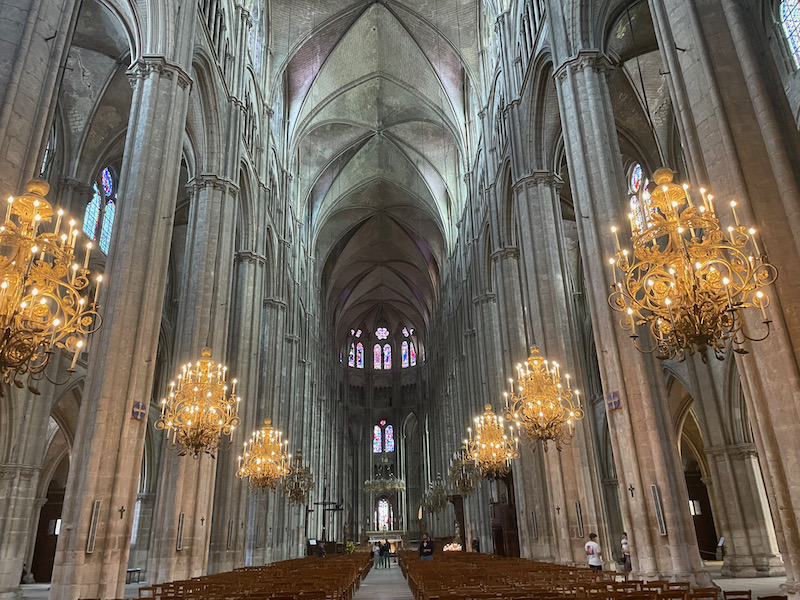
This is the Chapel of Saint John the Baptist, which dates from the 15th century. The painted mural, done around 1475, was discovered and restored from 1990-1995. It shows Christ on the cross with a body of water in the background, mourned by the Virgin Mary and Saint John. I also grabbed a picture of the stained-glass window.
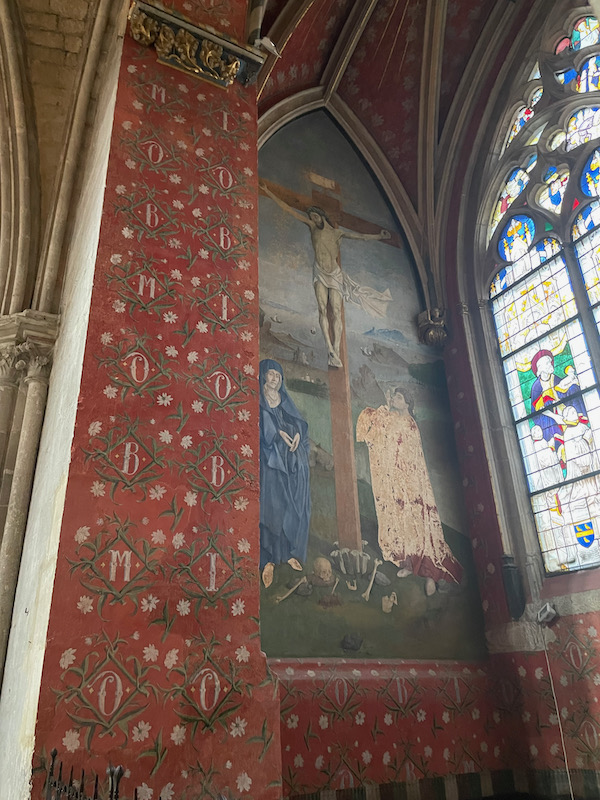
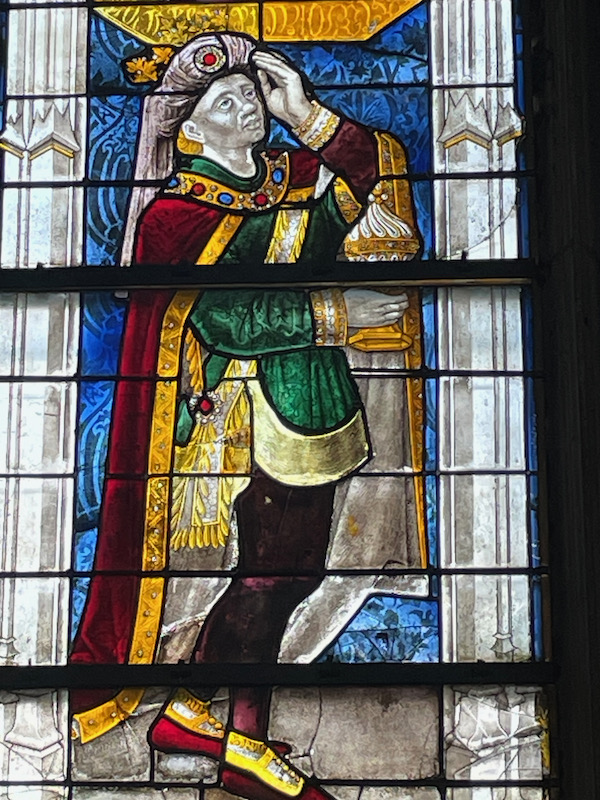
The entry to the Sacristy Chapel has this magnificent flamboyant Gothic decoration.
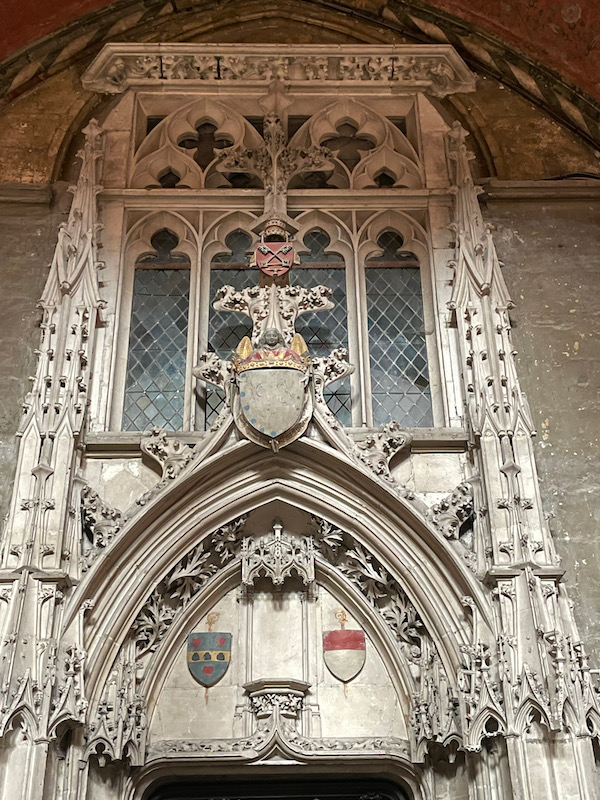
The Chapel of Saint Ursin, who is the 1st bishop of Bourges, contains 3 marble statues dating from the 17th century that represent members of the Aubespine family, who donated the money to build the chapel. The stained glass window shows the Annunciation, with Saint James on the left, then the archangel Gabriel (with wings) announcing to the Virgin Mary that she will be the mother of Jesus. Saint Catherine of Alexandria is on the right-hand side.
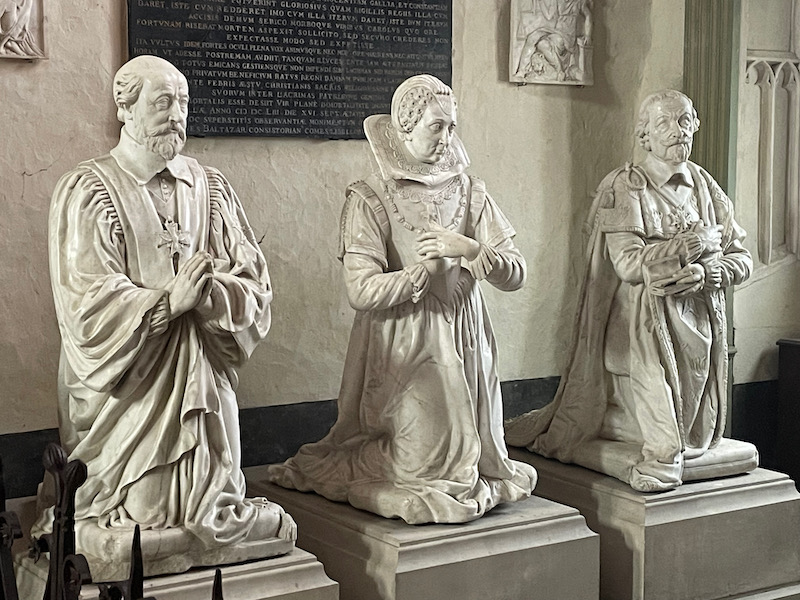
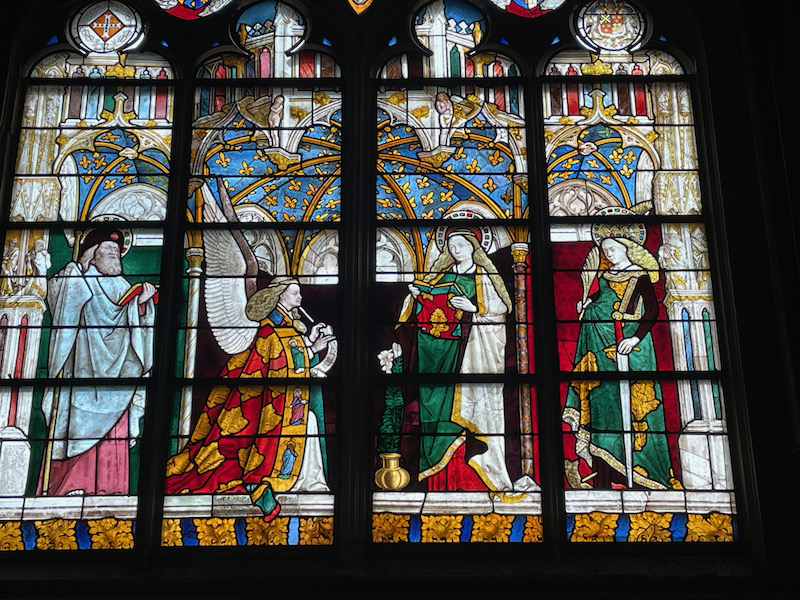
In 1424, the cathedral received its astronomical clock.
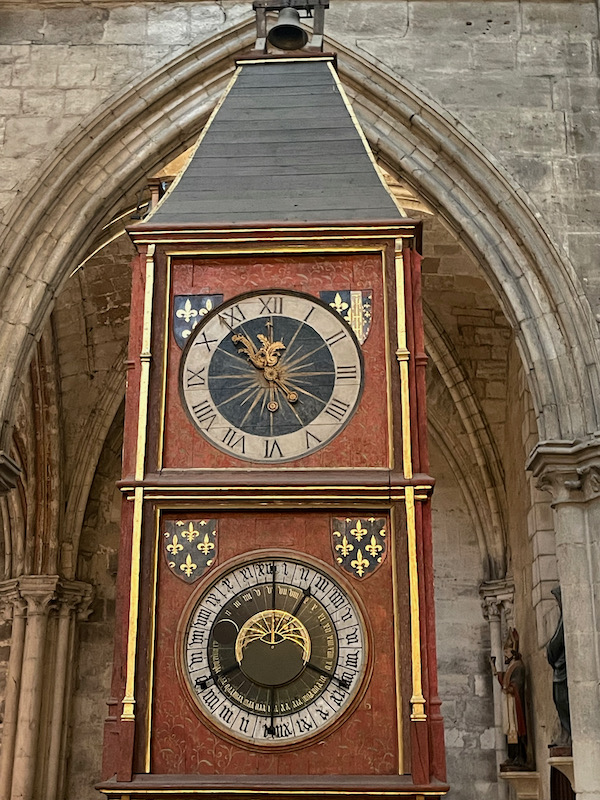
Now back outside to the main façade, and you can see how part of it is being worked on. On this side, there are 5 different portals, which are dedicated (left to right) to William of Bourges, the Virgin Mary, the Last Judgment (central portal), the martyr Stephen, and Saint Ursin of Bourges.
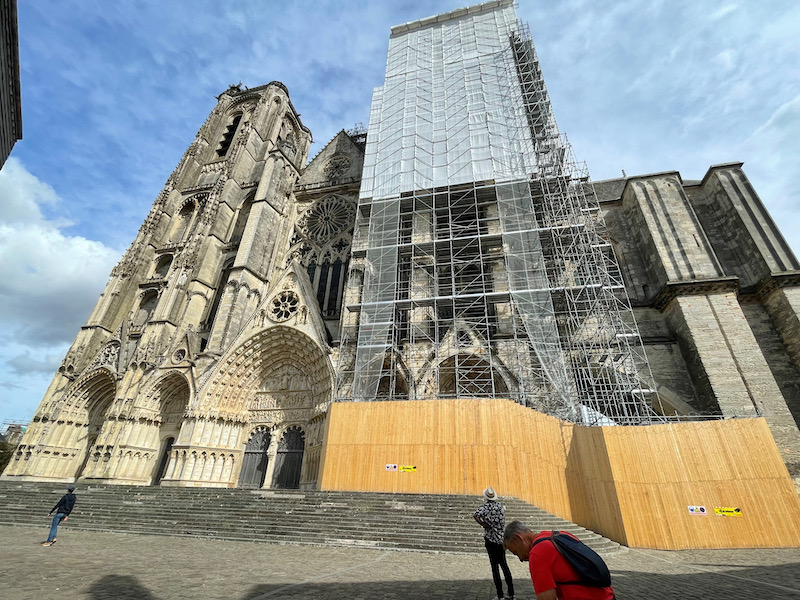
Here are a few close-up photos of the central portal decoration.
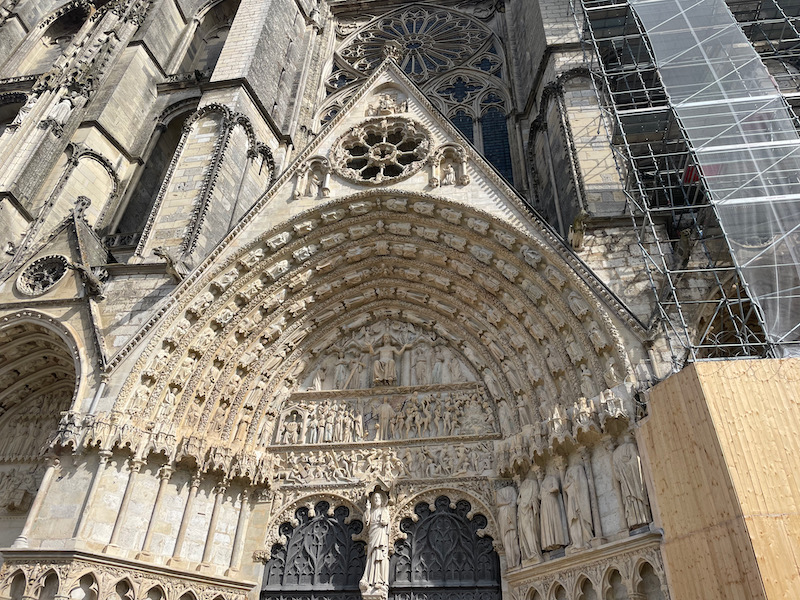
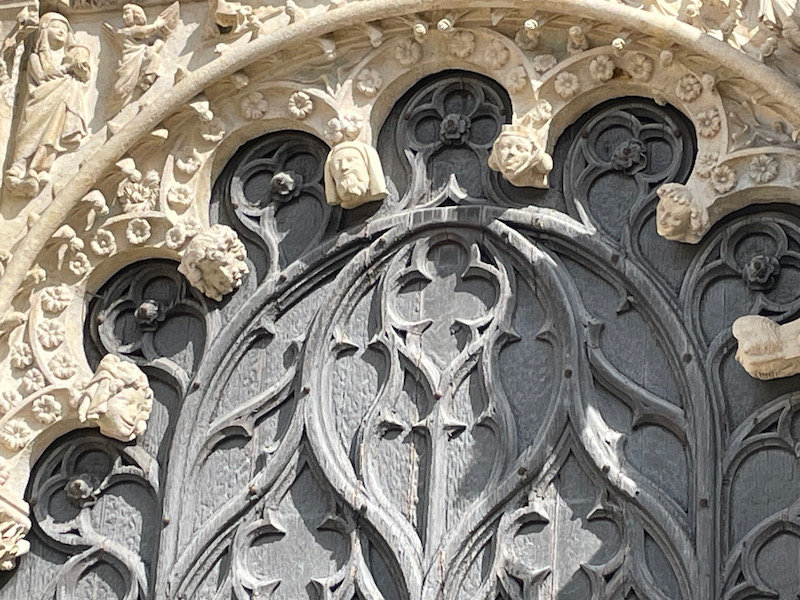
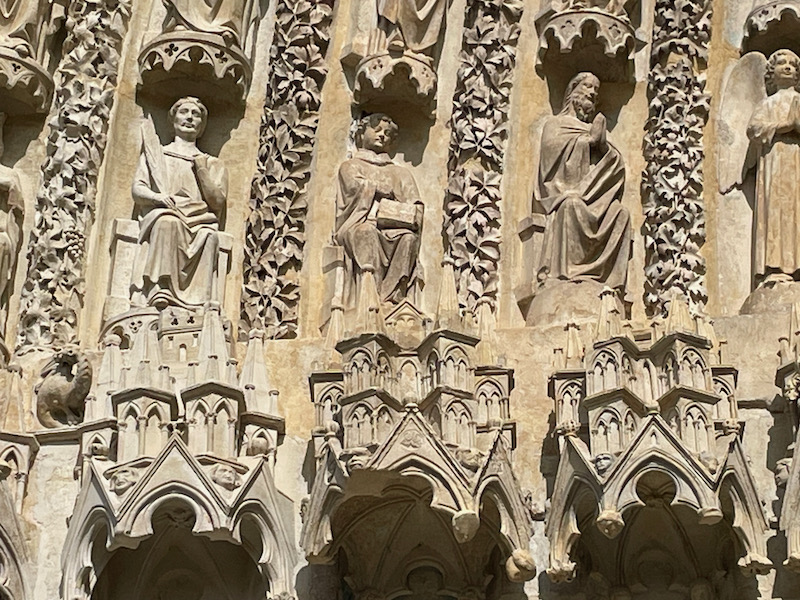
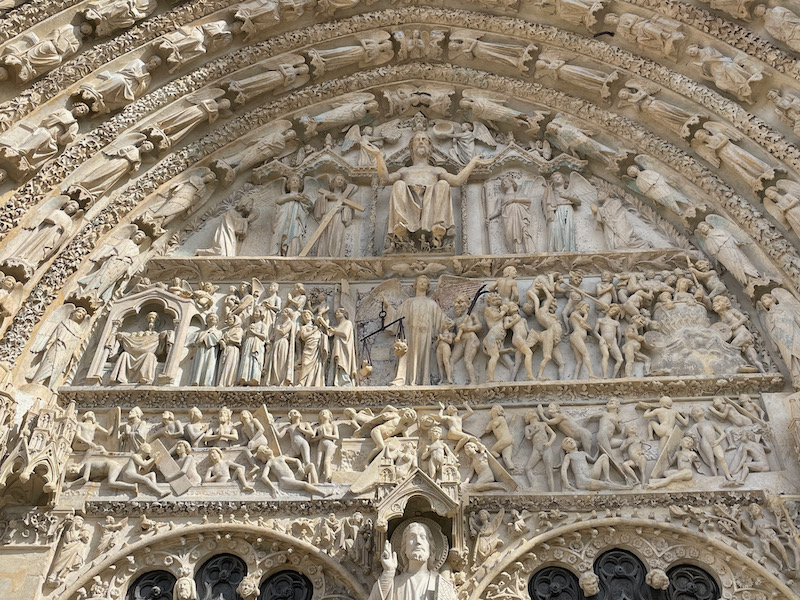
And "really" close-up detail of The Last Judgement. At the top, God sitting on the throne, then below him is the Weighing of Souls with the scales and the demons (on the right).
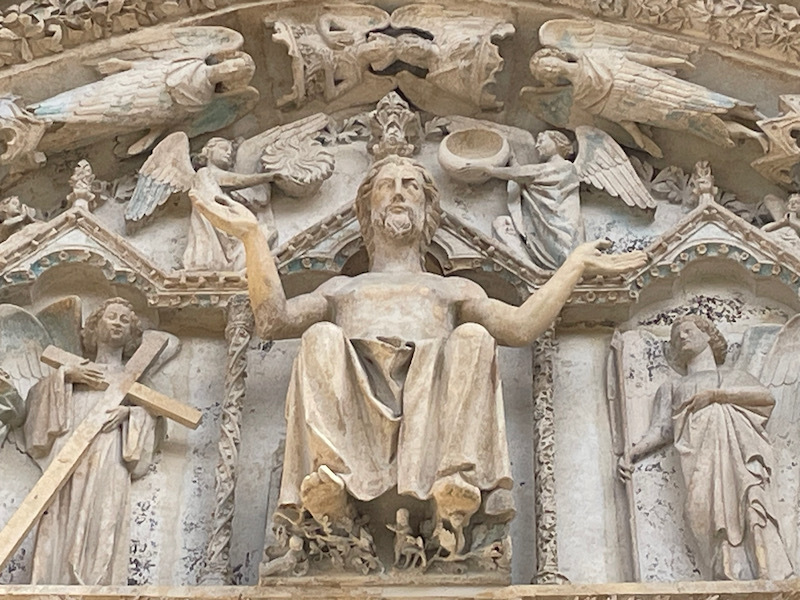
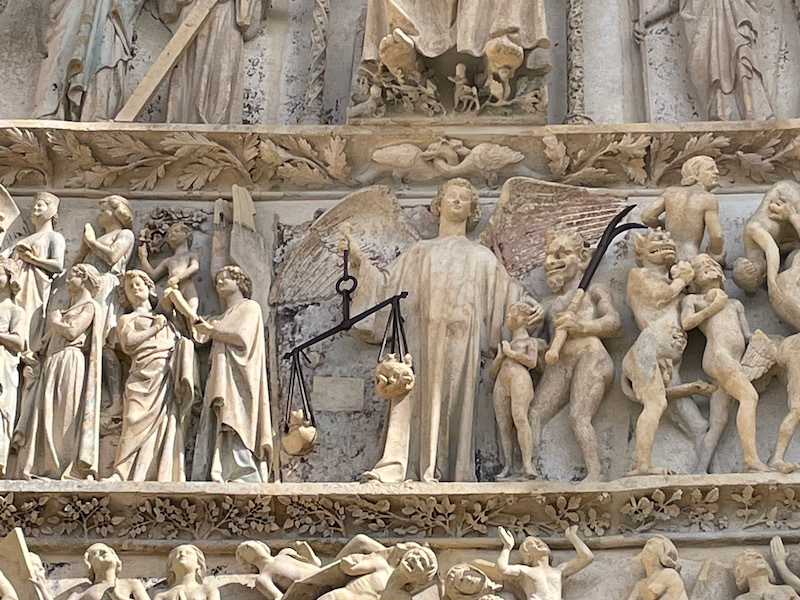
Here is the tympanum of the Virgin Mary and then the one with scenes from the life of William of Bourges.
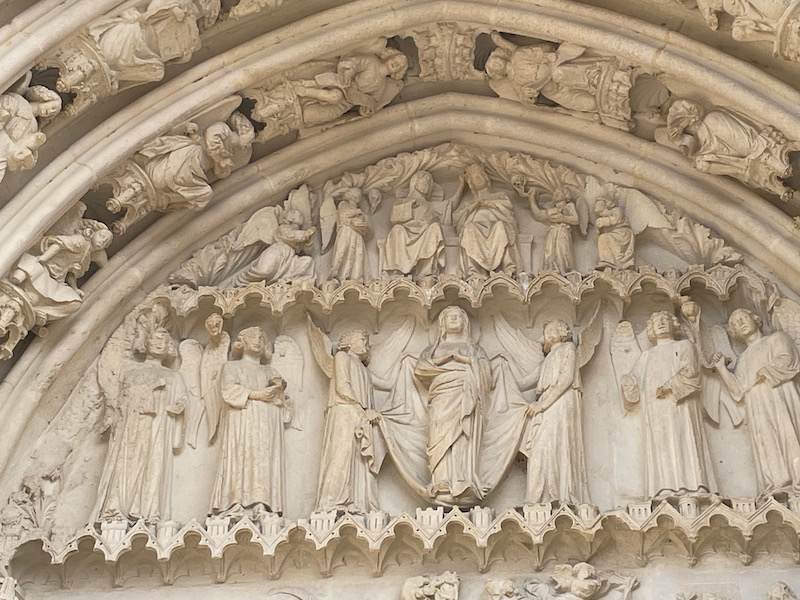
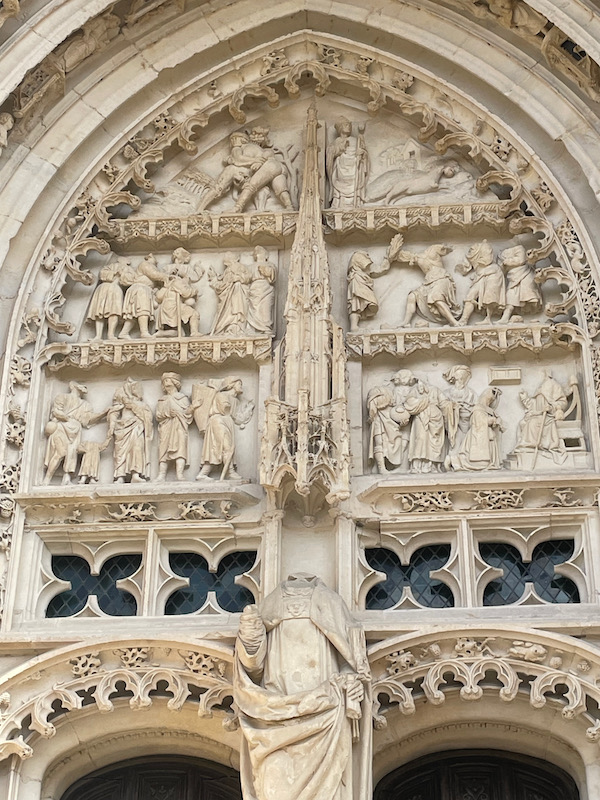
The Hôtel Cujas, another private mansion, was built in 1515 for an Italian merchant. It was bought in 1585 by Jacques Cujas, the regent of the University of Law, who died here in 1590 and where it gets its name. The building underwent modifications, with the addition of two turrets on either side of the main building in 1565 when the Bishop of Rennes was the owner. The facade overlooking the inner courtyard is adorned with red bricks and black brick diamonds. It is another museum in Bourges and was closed when we were there, so we weren't able to get any good pictures of the courtyard.
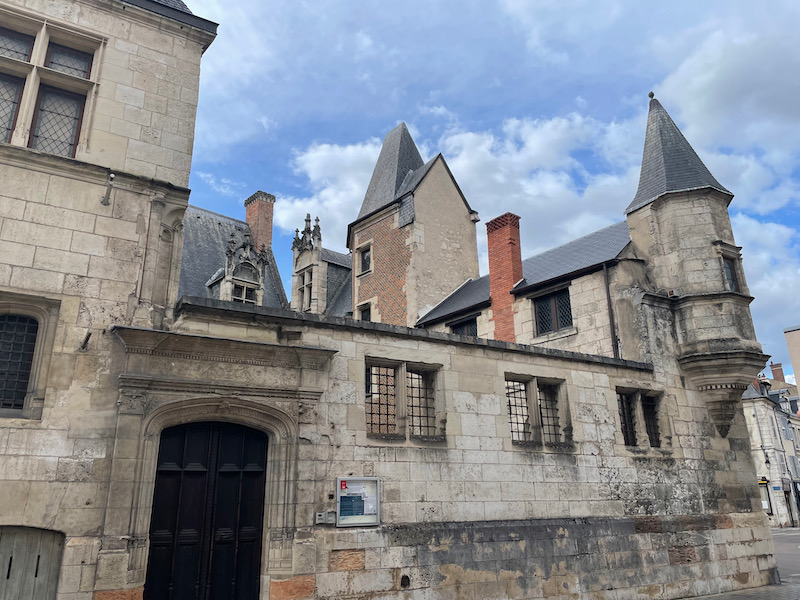
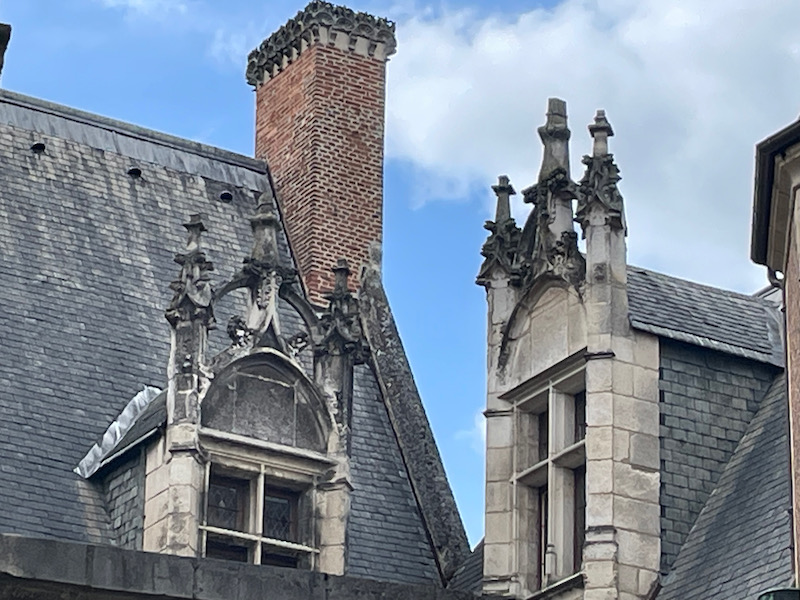
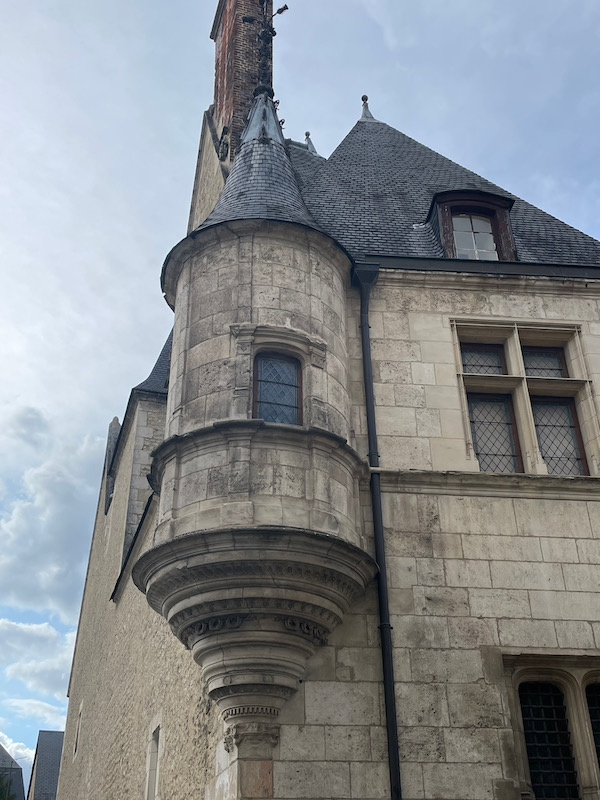
The Palais Jacques Cœur is an example of civil architecture from the 15th century. It is named for Jacques Cœur, a native of Bourges and treasurer to King Charles VII, who was had this Flamboyant-Gothic landmark built. Construction was started in 1443 and completed in 1453 but Cœur was arrested in 1451 and exiled, so he didn't get to enjoy it. It was seized by Charles VII but then given to Cœur's children in 1457 (he had already died in exile). It is open to the public but dogs are not allowed inside so only a few views of the outside. There is also another example of having a figure of a person sculpted within a false window, similar to the Hôtel des Echevins that we saw earlier.
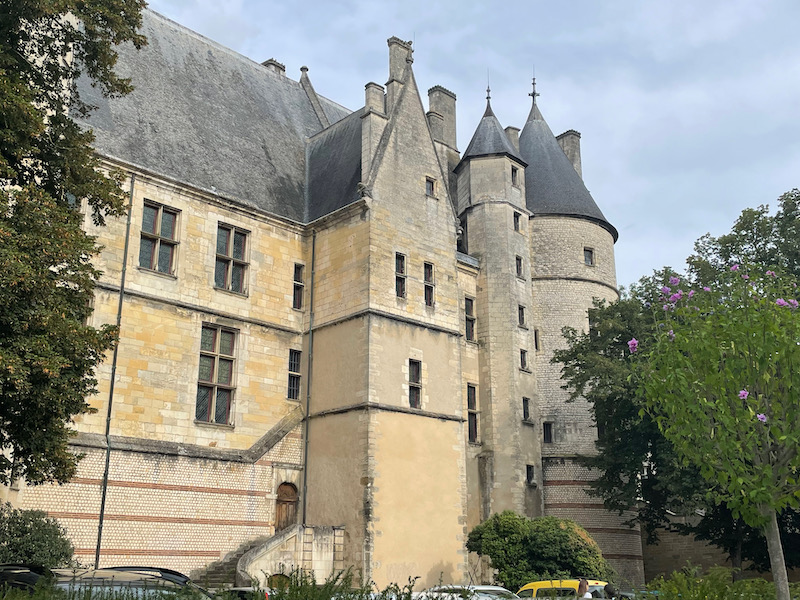
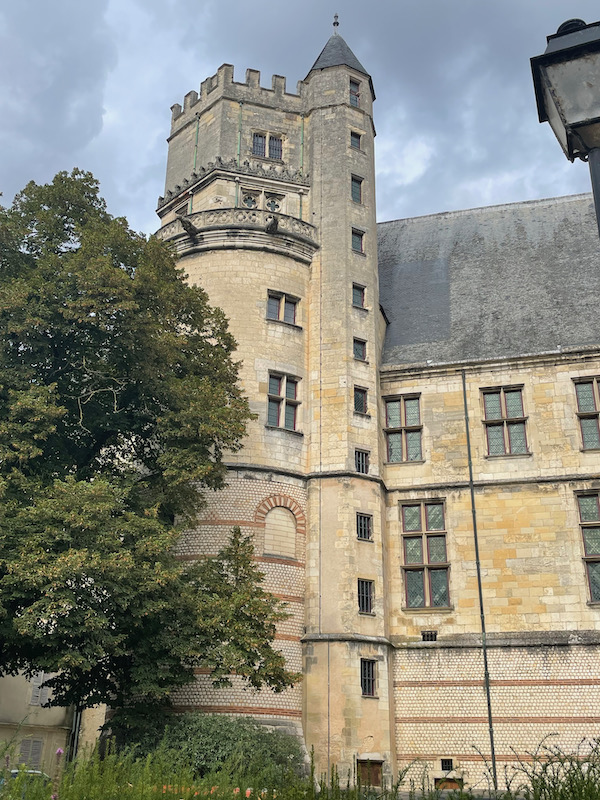
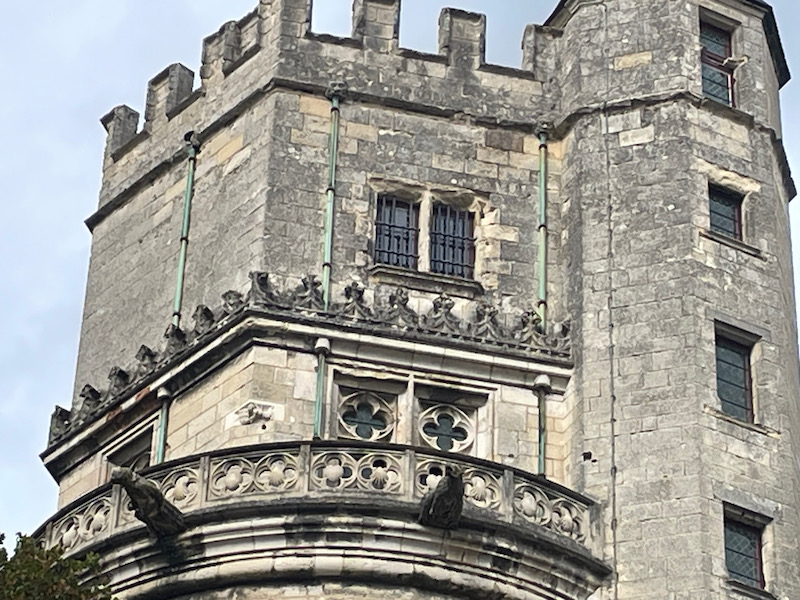
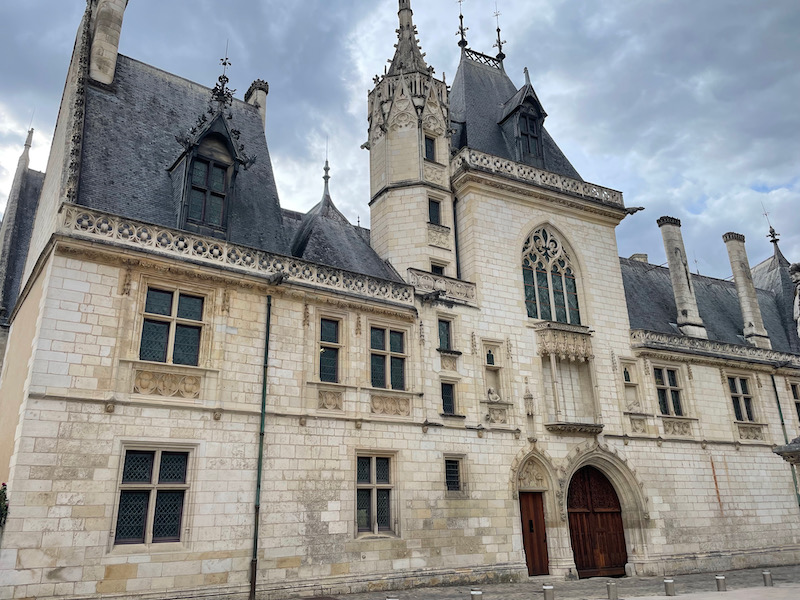
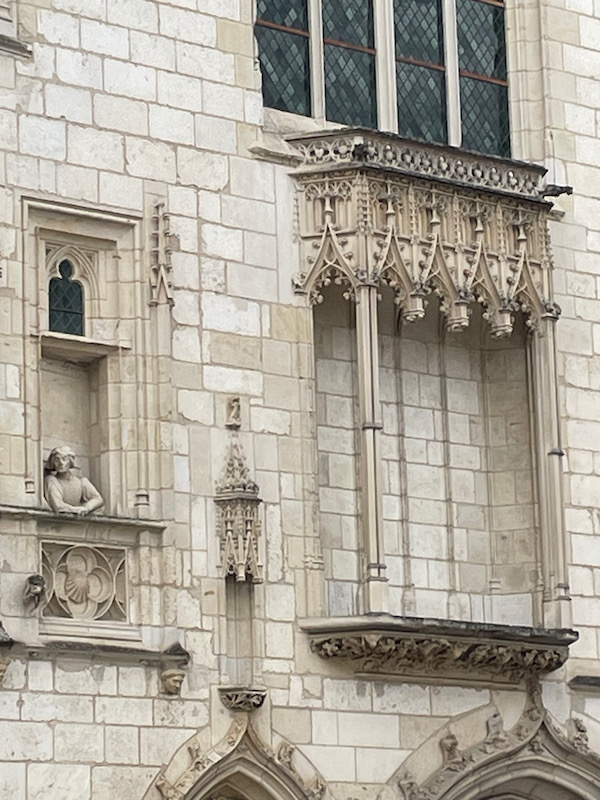
Our last stop was at Église Saint-Pierre-le-Guillard, which dates back to the 15th century although it has been rebuilt and modified several times since then. Like the Cathedral of Saint-Etienne, the church has no transept and has an ambulatory with radiating chapels.
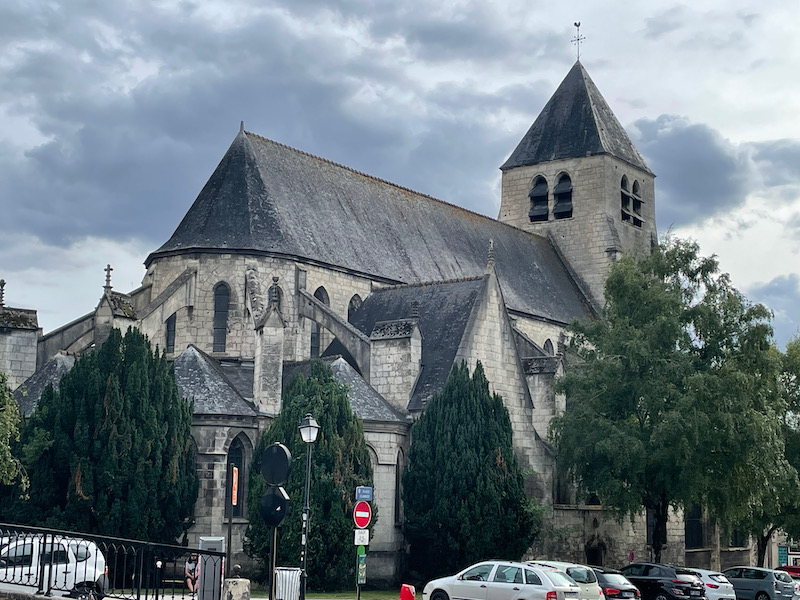
Here you can see the nave with the side aisles and the pointed Gothic arches. Then the small, unassuming altar surrounded by thin pointed Gothic arches.
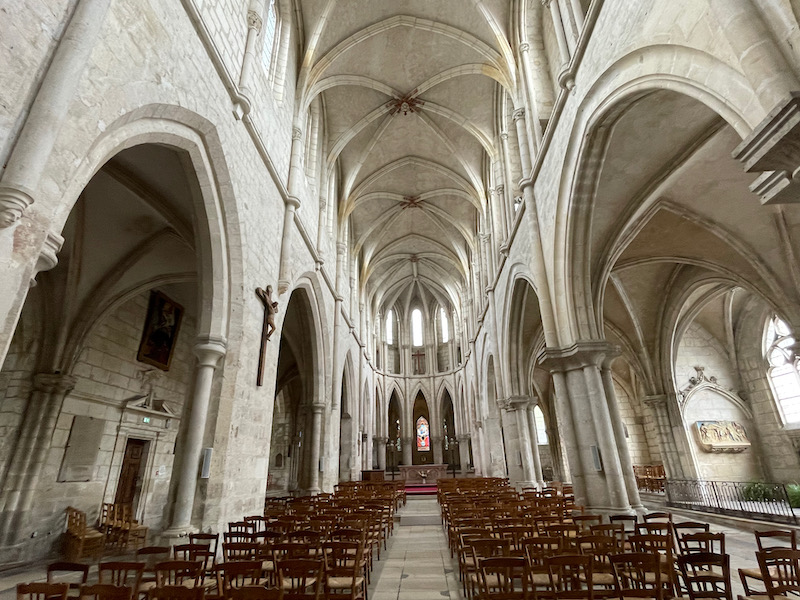
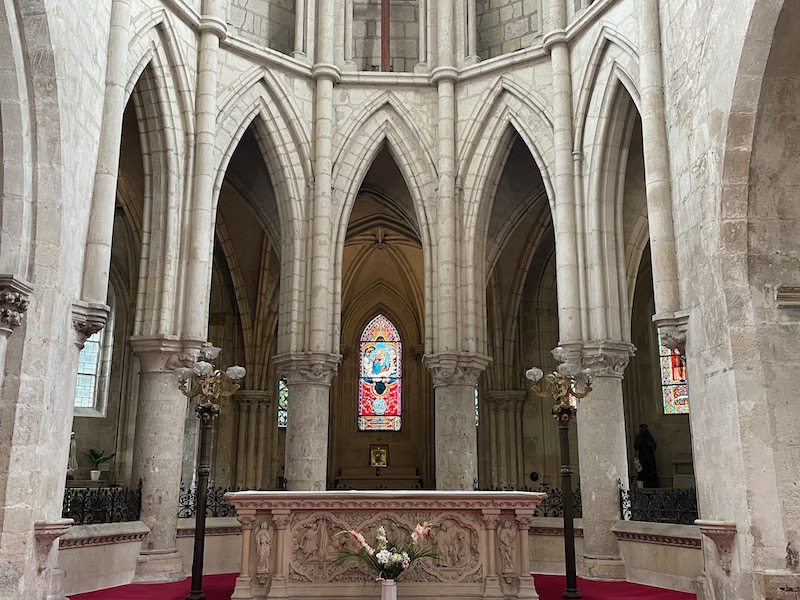
The stained-glass window of Saint Augustine was created in the 1870s.
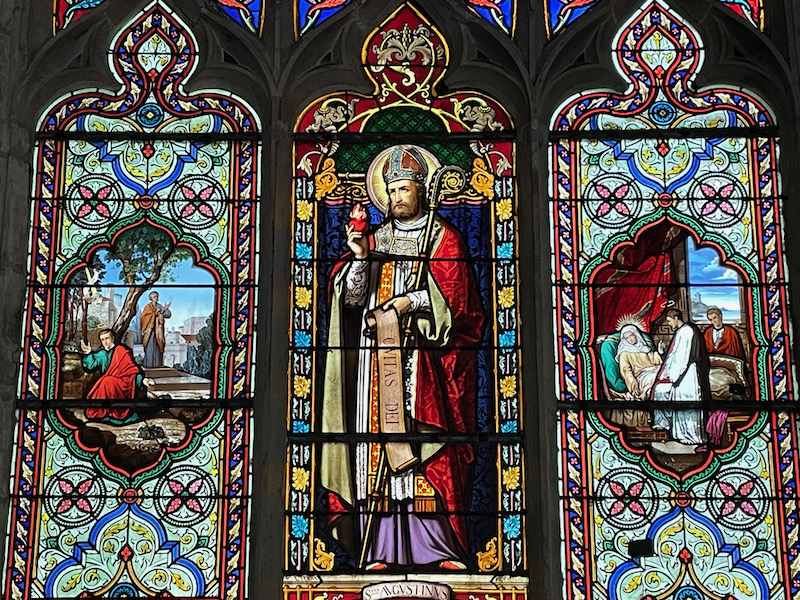
This is a Bas-relief of the Nativity from the 16th century, which is in one of the side chapels. In addition to the normal parts of the Nativity, the donor who paid for the chapel is seen kneeling on the left with the apostle Peter and his wife is seen kneeling next to the apostle Paul.
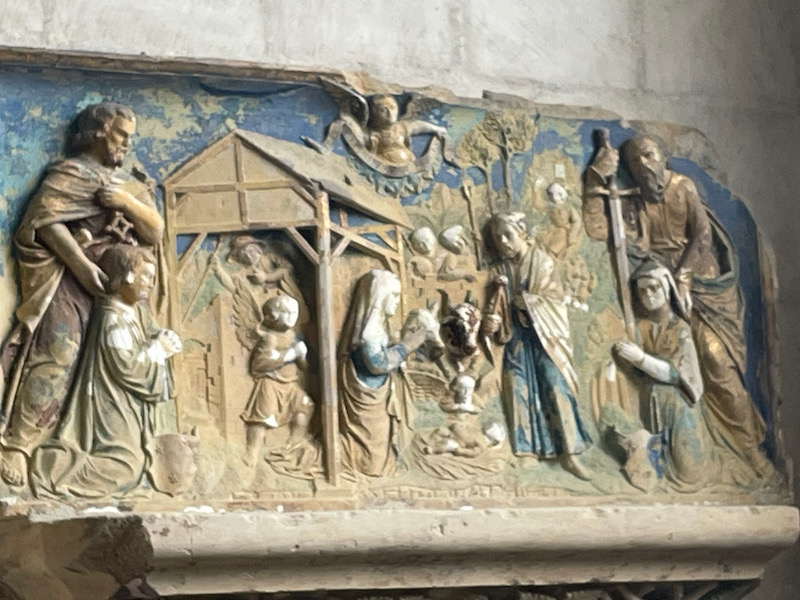
The tympanum of the stained glass window of the Saint-Pierre chapel houses the only fragments of the church's 16th century stained glass windows.

This painting, "The Miracle of the Mule" was painted in the 2nd half of the 17th century. The story of the miracle of the mule is linked to the church of Saint-Pierre-le-Guillard, but also to Saint Anthony of Padua. The story goes that in the 13th century, Saint Anthony of Padua was preaching in Bourges. There was a Jewish man named Zacharie Guillard who was constantly blaspheming against the sacrament of the Eucharist. Guillard said that if his mule knelt before the Eucharist, then he would believe that God was there. The animal was not fed for three days, then it was presented with a basket of oats on one side and the Blessed Sacrament on the other. When the mule knelt before the sacred object, Guillard saw this as a miracle and converted.
